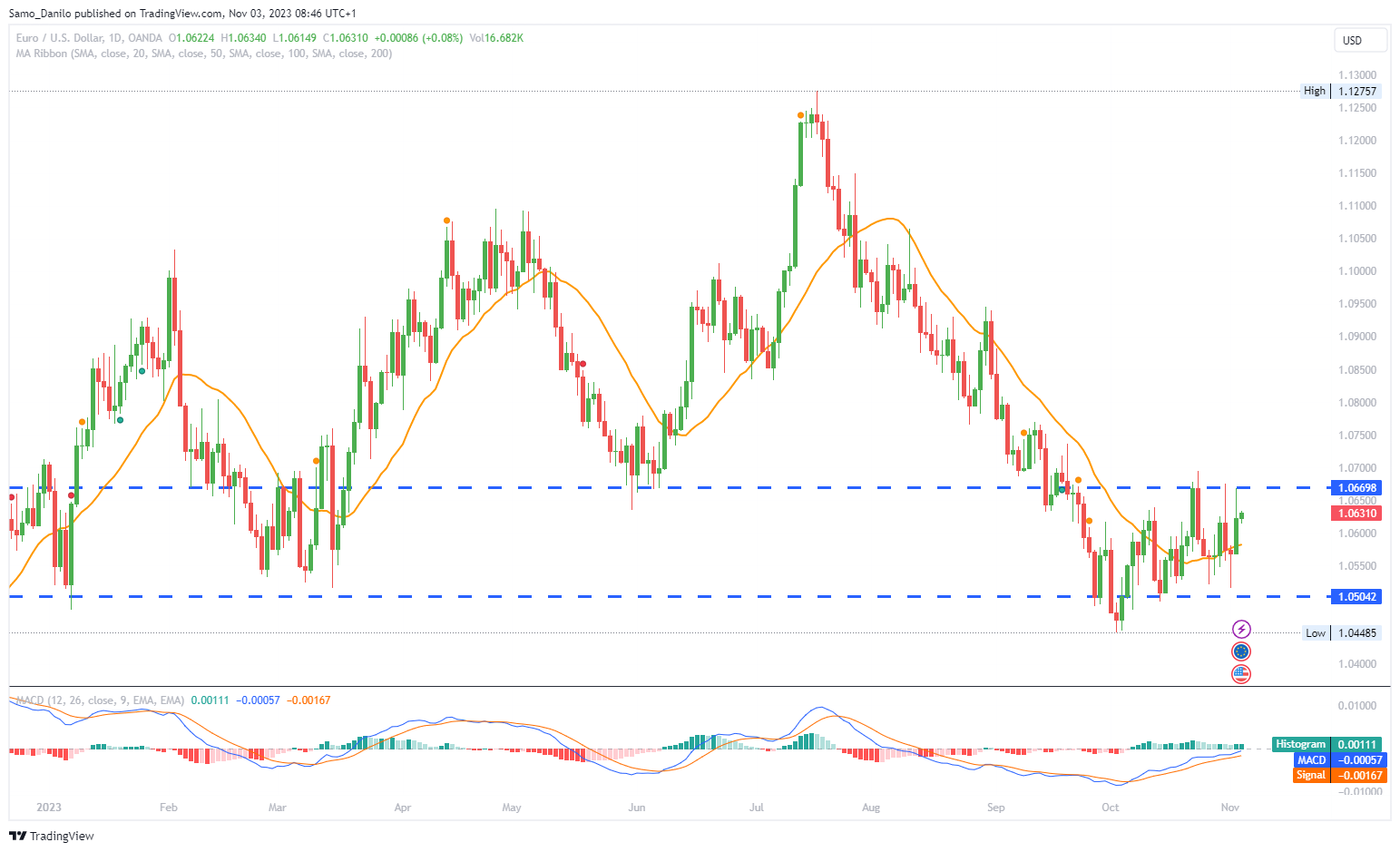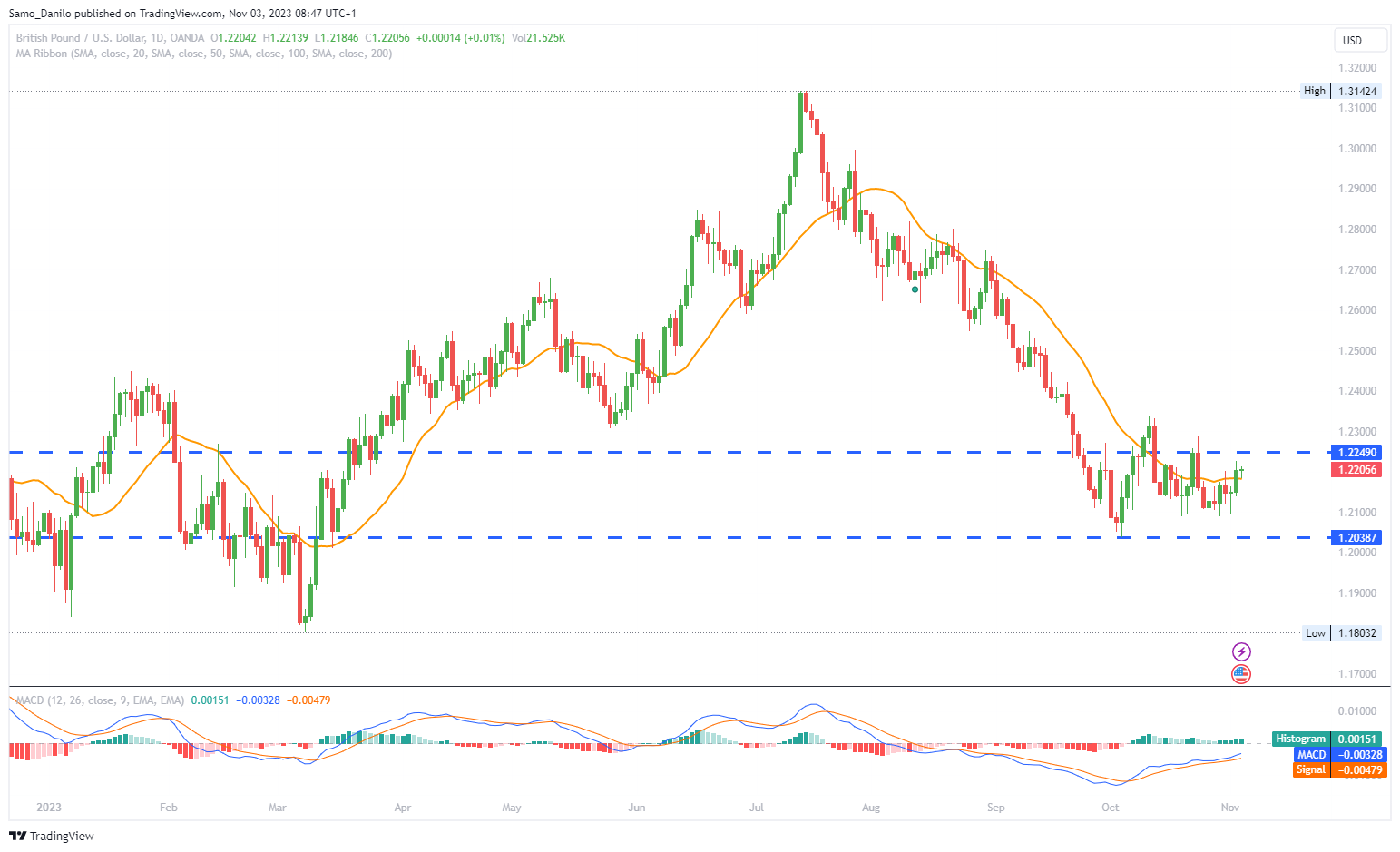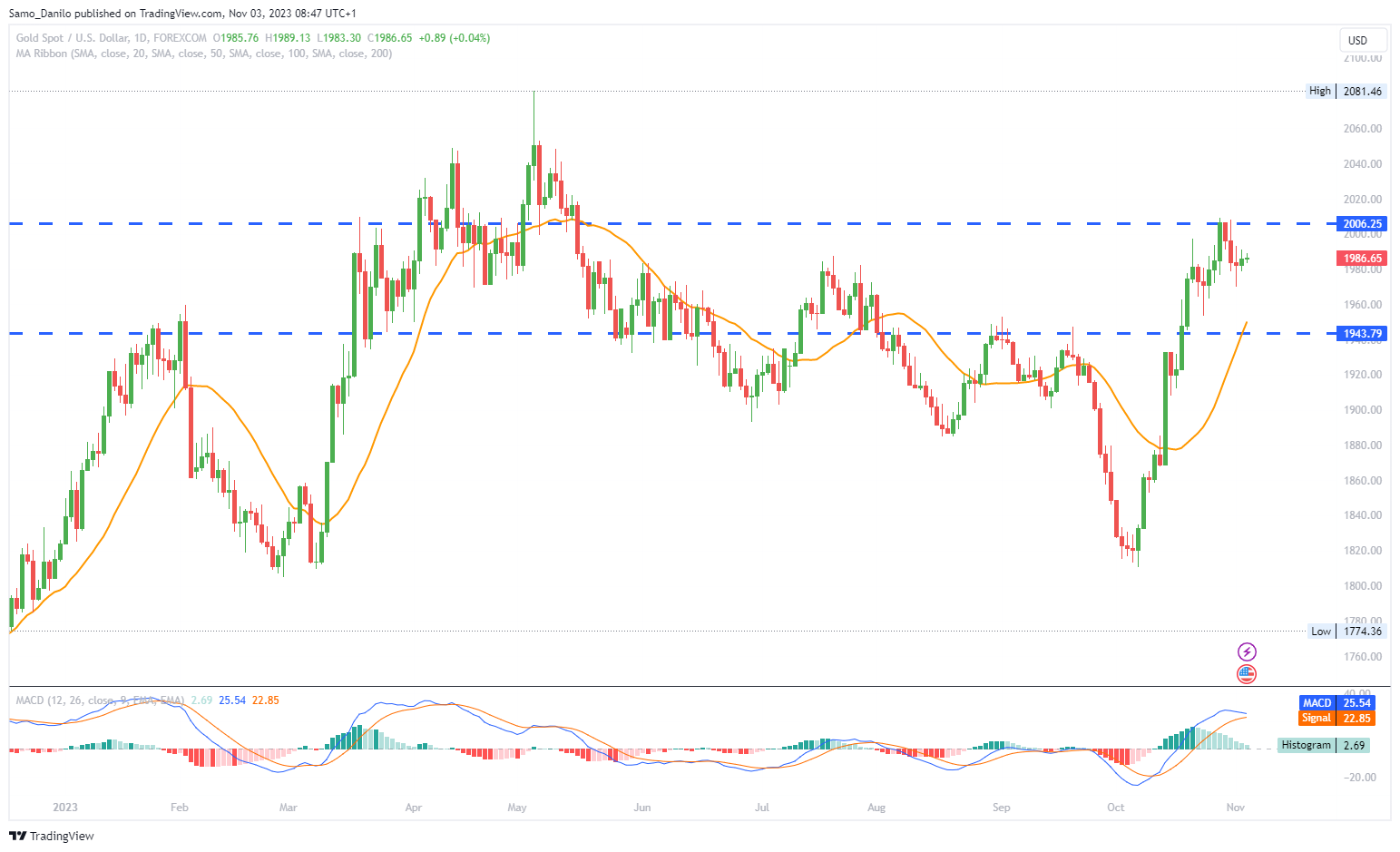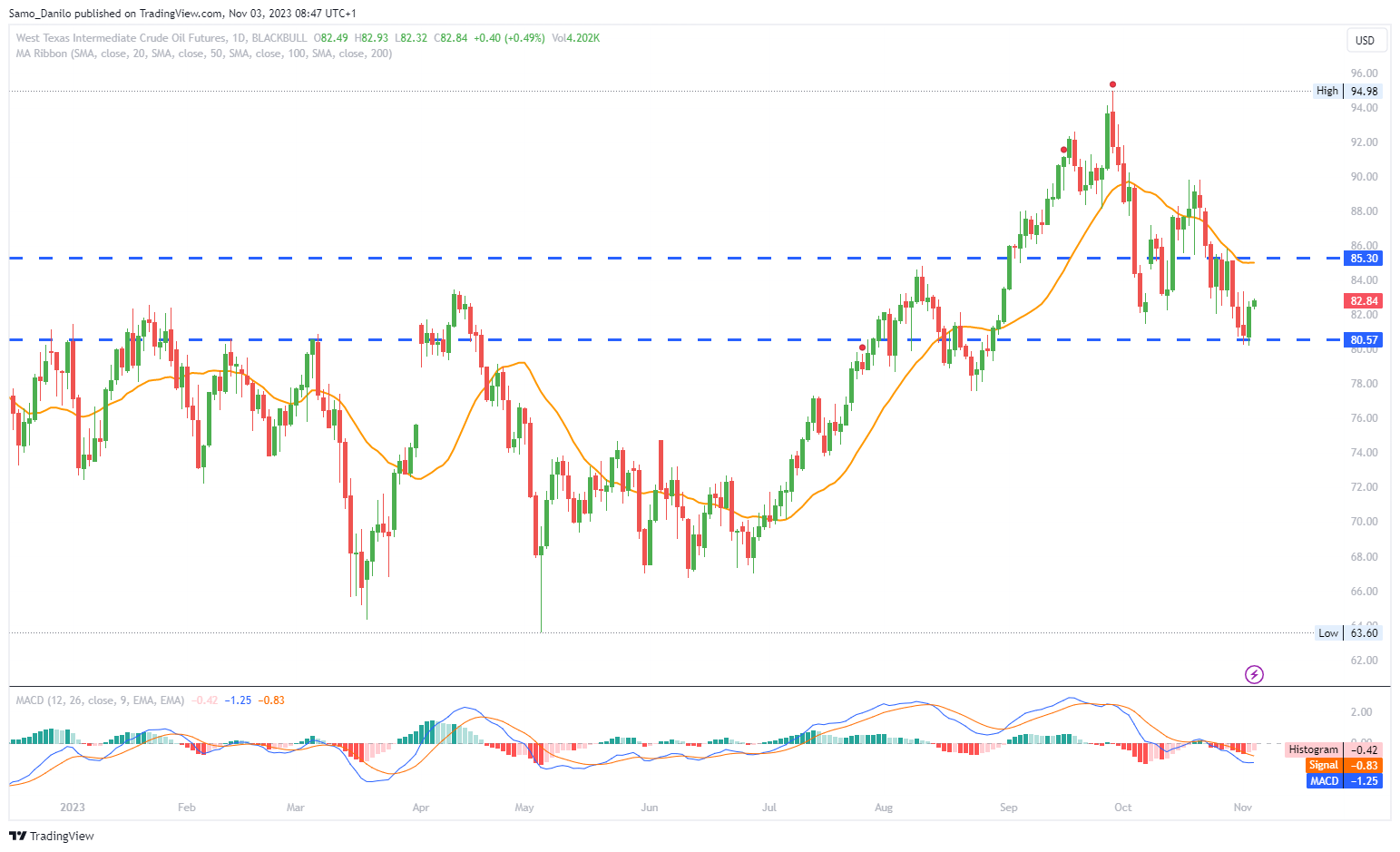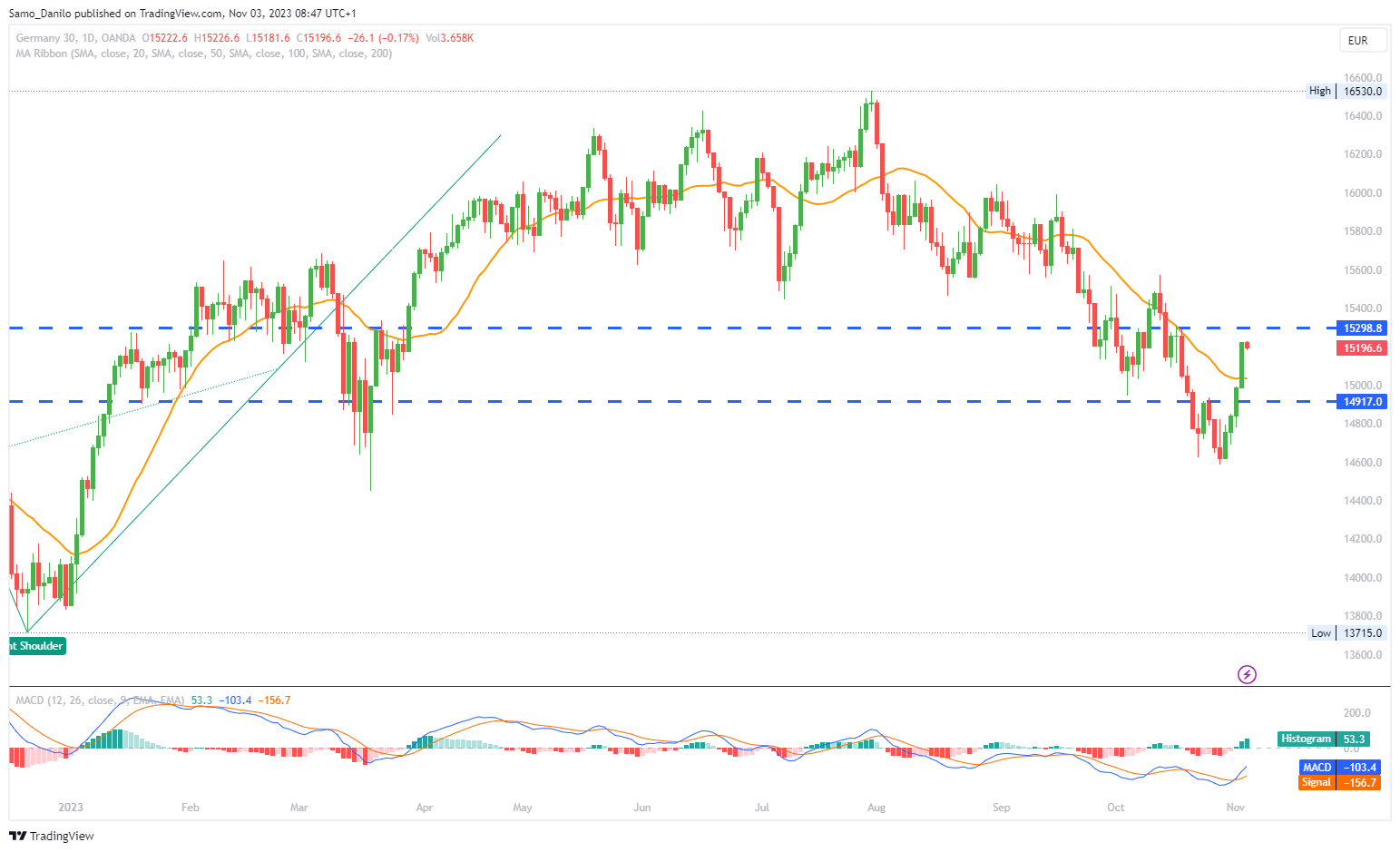EURUSD
- The EUR/USD currency pair maintained its position through the Asian session on Friday and seemed to have paused the pullback experienced from the weekly high around the 1.0670-1.0675 range.
- On Thursday, the US weekly Initial Jobless Claims were reported to have risen to the highest level in seven weeks. The number of claims increased to 217,000 from the previous reading of 212,000, surpassing the estimated figure of 210,000. This suggests some challenges in the US labor market.
- HCOB's final Eurozone Manufacturing PMI dropped to 43.1 in October from September's 43.4. Although this was slightly higher than the initial estimate of 43.0, a reading below 50 indicates a contraction in manufacturing activity. Several Eurozone countries, including France, Italy, Spain, and Germany, have reported declining manufacturing activity, signaling the possibility of a severe recession in the region.
- The weak manufacturing data in the Eurozone may limit the Euro's upside and act as a headwind for the EUR/USD pair. With many Eurozone countries experiencing contraction in their manufacturing sectors, the overall economic outlook for the region remains uncertain.
- Market participants are expected to closely monitor the Eurozone Unemployment rate and the release of US employment data, including the Nonfarm Payrolls and Average Hourly Earnings. These data points can significantly influence the direction of the EUR/USD pair.
Closing statement: In summary, the EUR/USD pair has shown steady trading, but the weak manufacturing data in the Eurozone and higher US jobless claims may affect its performance. Upcoming economic data releases will be closely watched by traders.
GBPUSD
- During the Asian trading session on Friday, the GBP/USD currency pair experienced a slight decline, retracing part of the gains it had made the previous day. The pair had previously reached the 1.2225 level, which was a one-and-a-half-week high.
- Market attention is focused on the Nonfarm Payrolls (NFP) report from the United States, a widely watched economic indicator. The report is expected to show that the US economy added approximately 180,000 jobs in October. This number represents a significant decline from the 336,000 jobs added in the previous month. The jobless rate is anticipated to remain steady at 3.8%.
- Earlier in the week, Federal Reserve (Fed) Chair Jerome Powell commented that some slowing in the labor market may be necessary for inflation to continue its downward trajectory.
- A positive surprise in the NFP report, such as higher job creation, could raise expectations for another interest rate hike by the Federal Reserve (Fed) in December or January. This potential rate hike could boost the US Dollar (USD) and lead to selling pressure on the GBP/USD pair.
- The GBP/USD pair may also face challenges due to the Bank of England's (BoE) grim economic outlook. The BoE has expressed concerns that the UK economy might risk falling into a recession in the coming year.
| SMA (20) | Neutral | |
| RSI (14) | Slightly Rising |
|
| MACD (12, 26, 9) | Slightly Rising |
|
Closing statement: the GBP/USD pair saw a slight decline during the Asian session ahead of the highly anticipated NFP report from the United States. The outcome of this report could significantly influence the pair's direction, particularly if it affects expectations for future interest rate hikes by the Federal Reserve. The Bank of England's economic outlook adds another layer of uncertainty to the GBP/USD's prospects.
GOLD
- Gold price has attracted buyers for the second consecutive day, maintaining modest intraday gains as it enters the European trading session.
- One of the main drivers of this positive sentiment for gold is the belief that the Federal Reserve (Fed) is approaching the end of its policy-tightening cycle and may start cutting interest rates in June 2024. These expectations have put pressure on the US Dollar (USD), keeping USD bulls on the defensive.
- Market participants are currently pricing in an 80% chance that the Fed will keep interest rates unchanged in December, as indicated by the CME FedWatch tool. This expectation suggests that the Fed may not raise rates further in the near term.
- The focus is on the US labor market report, particularly the Nonfarm Payrolls (NFP) figure, which is expected to show an increase of 180,000 jobs in October. This is a significant decrease compared to the 336,000 job increase recorded in September.
- A weaker-than-expected NFP figure and soft wage inflation could further confirm market expectations that the Fed's tightening cycle is coming to an end. This scenario could trigger a wave of selling in the US Dollar, potentially providing support for gold. In such a case, gold price may aim to reclaim the $2,000 per ounce level.
| SMA (20) | Rising |
|
|
| RSI (14) | Slightly Falling |
| |
| MACD (12, 26, 9) | Slightly Rising |
|
Closing statement:In summary, gold price is on the rise for a second consecutive day as market sentiment is influenced by expectations of the Fed's future interest rate decisions. A weak NFP print and the potential end of the Fed's tightening cycle could drive further gains in gold, especially if the US Dollar weakens.
CRUDE OIL
- West Texas Intermediate (WTI) oil prices are trading in positive territory for the second consecutive day. This positive trend is attributed to an improved risk appetite in the market and the weakening of the US Dollar (USD), which often supports oil prices.
- One of the factors contributing to the positive sentiment for oil is the ongoing risk of the Middle East conflict spreading across the region. This geopolitical tension raises concerns about potential disruptions to oil supplies from the region, which can influence oil prices.
- China plays a significant role in the oil market as one of the world's major oil consumers. Recent economic data from China is mixed. On one hand, China's Services Purchasing Managers' Index (PMI) for October showed an improvement, with a reading of 50.4, up from 50.4 in September and better than market expectations. However, earlier in the week, China's Caixin Manufacturing PMI came in worse than expected, suggesting challenges in the manufacturing sector. These mixed data points could influence oil prices.
- Oil traders will closely monitor the US employment data due to be released later on Friday. These employment figures can significantly impact the oil market, especially given that oil prices are denominated in US Dollars (USD). Strong employment data may strengthen the USD and potentially put downward pressure on oil prices.
| SMA (20) | Neutral | |
| RSI (14) | Slightly Rising |
|
| MACD (12, 26, 9) | Slightly Rising |
|
Closing statement: the GBP/USD pair saw a slight decline during the Asian session ahead of the highly anticipated NFP report from the United States. The outcome of this report could significantly influence the pair's direction, particularly if it affects expectations for future interest rate hikes by the Federal Reserve. The Bank of England's economic outlook adds another layer of uncertainty to the GBP/USD's prospects.
DAX
- The European markets, including the DAX, reacted to the Federal Reserve's (Fed) interest rate decision and Fed Chair Powell's press conference. These events had an impact on investor sentiment.
- German economic data was released, including the country's trade surplus figures for September. The data indicated that Germany's trade surplus declined from the previous month, which could influence investor sentiment regarding German and European economic performance.
- Later in the morning session, Eurozone unemployment figures were expected to be released. However, except for an expected increase in the unemployment rate, these figures were unlikely to have a significant impact on the DAX.
- Corporate earnings results play a pivotal role in moving the DAX. Earnings releases from companies like BMW, Vonovia, and Fresenius are anticipated to provide further insight into the financial health of these firms and potentially impact the DAX index.
| SMA (20) | Slightly Falling |
| |
| RSI (14) | Rising |
|
|
| MACD (12, 26, 9) | Slightly Rising |
|
Closing statement: In summary, the DAX was influenced by the Fed's recent decision and was sensitive to both European and German economic data. The DAX is also influenced by corporate earnings results, and earnings releases from key companies can significantly impact the index's performance. Additionally, upcoming economic data, such as Eurozone unemployment figures, is expected to be monitored by investors.
